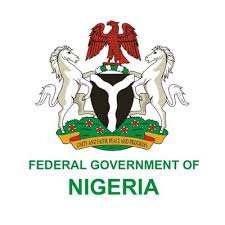In December 2015, when the Nigerian Electricity Regulatory Commission, NERC, with the backing of the Federal Government, carried out the last upward electricity of tariff review, it told Nigerians that the hike would bring about stable electricity supply and finally resolve the problems of the country’s power sector.
Specifically, then-Minister of Power, Works and Housing, Mr. Babatunde Fashola, urged Nigerians to comply with the upward review and ensure that they pay their bills, noting that the Nigerian electricity sector would record considering improvement thereafter.
Also, the Chairman/Chief Executive Officer of the NERC at that time, Dr. Sam Amadi, declared that the tariff increase would help achieve a smooth meter roll-out, as almost every Nigerian would be metered.
He further stated that the increased tariffs would ensure more hours of power supply, and reset the electricity market, make the sector more efficient, bring about increased quantities and create a market whereby customers would be satisfied with what they are paying for
Up until 2015, the NERC had also, at various times, introduced Meter Maintenance Fee and Fixed Electricity Charges ranging from between N750 and N800 per customer under the guise that the charges were critical for the growth of the industry.
Prior to the 2015 electricity tariff review, the NERC had undertaken a review of the tariffs in 2012, which increased the tariff to N22.62 per kilowatt hour of electricity. The tariff was also reviewed upward to N23.75 per kilowatt-hour in 2014, N26.50 in 2015, before the latest review, January 2020, which sought to hike tariffs to as high as N49.80 per kilowatt-hour of electricity.
Up untill 2015, the NERC had also, at various times, introduced Meter Maintenance Fee and Fixed Electricity Charges ranging from between N750 and N800 per customer under the guise that the charges were critical for the growth of the industry.
Prior to the 2015 electricity tariff review, the NERC had undertaken a review of the tariffs in 2012, which increased the tariff to N22.62 per kilowatt hour of electricity. The tariff was also reviewed upward to N23.75 per kilowatt-hour in 2014, N26.50 in 2015, before the latest review, January 2020.
Fast forward to January 2020, a little over four years after the last hike in electricity tariffs, reports from across the country showed that power supply had worsened from what it was in 2015 and the rot had eaten deeper into the sector.
Majority of electricity consumers are still at war with the various electricity distribution companies, DISCOs, for meters, which the DISCOs, many believe, had deliberately made a scarce commodity; while the inefficiencies in the electricity sector had hit an all time high.
Data obtained from the Ministry of Power revealed that by December 2015, electricity supply stood at an average of 5,000 megawatts daily.
Today, however, Nigeria is battling with 3,500 megawatts and most households hardly enjoy up to eight hours of electricity daily.
Inefficiency is still recorded across all the value chain of the electricity sector, and Nigerians appear to be paying heavily for darkness.
No major investments had been made in the electricity sector by the electricity generation companies, GENCO, and the DISCOs, despite the privatization of the sector, the Federal Government continues to make heavy investments in the sector








